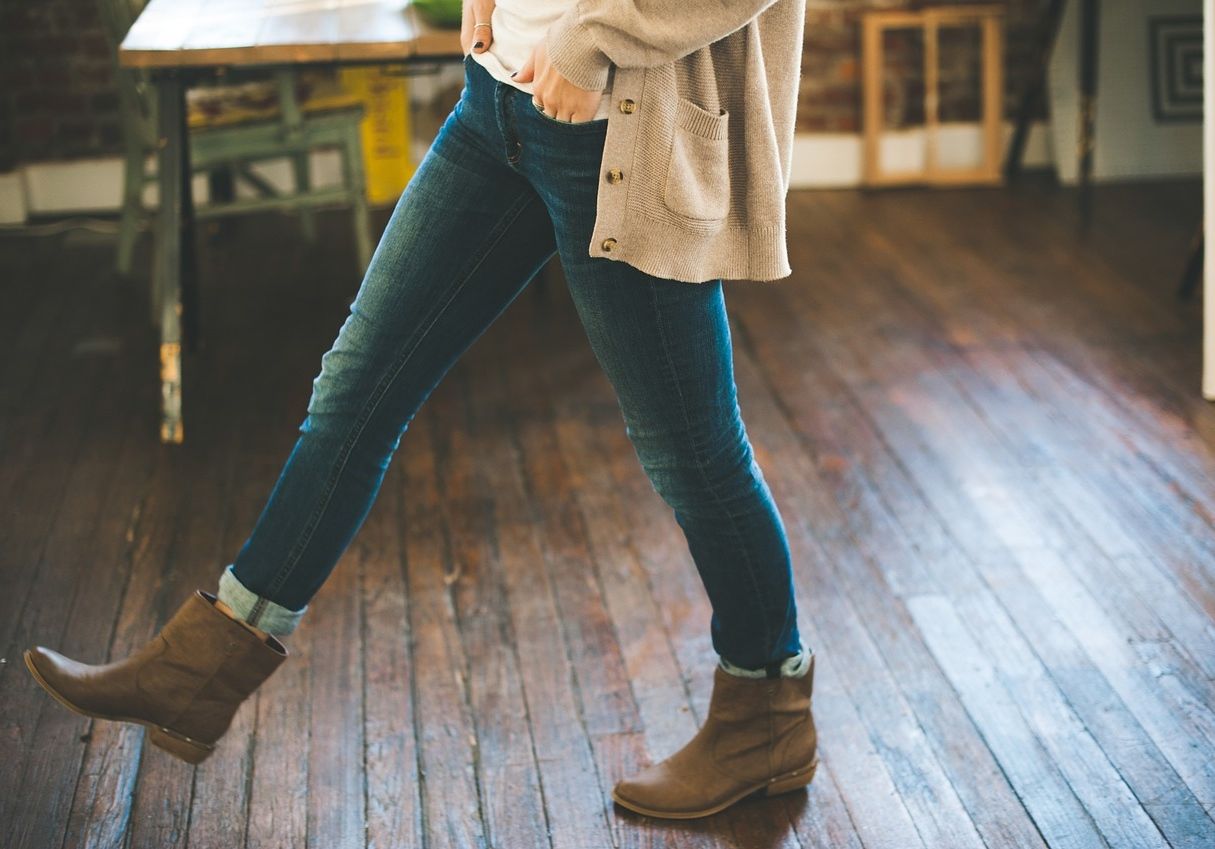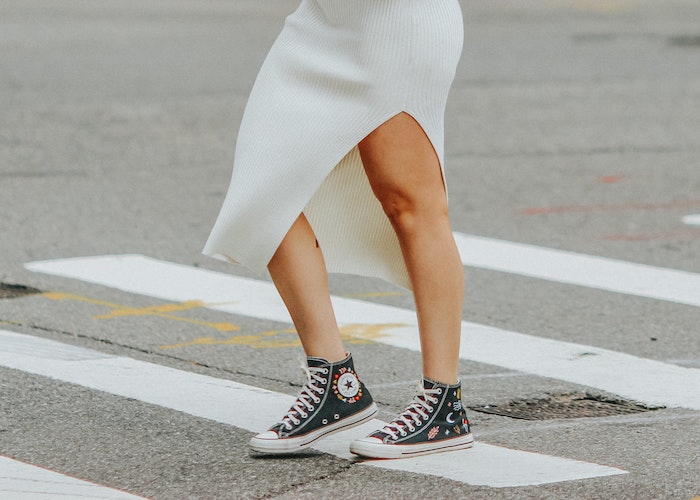When You Want To Quit Fast Fashion, But Can’t Afford To
One of the first “mall dates” I had with a friend was in the late 90s. I would’ve been about eight years old, so I’m sure our parents were close behind us as my friend, Julia, and I window-shopped while eating our Auntie Anne’s pretzels, occasionally stopping to point out cozy-looking sweaters, that no doubt had pom-poms on the sleeves. I turned to go into GAP, and Julia stopped me. She told me her mom wouldn’t let her go in, because they were boycotting GAP. At the time, GAP was best-known, in my head, for those pastel-colored sweatshirts with the big block-lettering that absolutely everyone ages seven to 15 wore on a daily basis. (I desperately wanted one, but they were too expensive, so I ended up with a hand-me-down of a faded pink one a few years after the trend.)
Boycotting stores because of fast fashion, as you may recall, was popular in the 90s, just like scrunchies, and tying your sweatshirt around your waist to accent your figure. However, as we crossed into the 2000s, more of our clothes started being made outside the USA, and our obsession with boycotting the known brands who used sweatshops faded. In 2015, we’re smack in the middle of the golden age of $20 distressed denim and $4 tank tops. There’s much less of a premium on well-made clothing, because we’re all flocking toward the places where we can find the perfect, short, floral dress for under $10.
Recently, I watched a Last Week Tonight with John Oliver segment on fast fashion, and was sincerely effected by some of the points he made. I’m embarrassed to say that debate over fast fashion hasn’t been on my radar much (since the 90s), until I started reading TFD. This year I’ve tried to live well below my means, and while that means bargain hunting at thrift stores, it also meant the occasional trip to H&M. However, after watching The True Cost, and reading some of the responses on TFD, I am making an effort to think critically before I walk into a clothing store.
According to the John Oliver clip, currently, 2% of the clothes we buy are made in this country. Brands we love for their cheap clothes, such as Zara, Forever 21, Gap, and H&M, are becoming increasingly popular and are mass-producing clothes faster than ever. The main appeal of H&M, for example, is that there is always something new to buy. The racks are replenished daily and clothes can go “from the sketch, to the rack, in three weeks.”
Fast fashion brands are obsessed with keeping their clothes new, and in a way, stores like that are mirroring the way we live in 2015. We gravitate toward sites with streamlined content that refresh 50 times a day because we want more content to consume, more videos to click on, more Instagram pictures to like. We consume with incredible speed, but lose interest just as quickly. We have, unfortunately, become the perfect audience for fast fashion.
To have such a fast turnover rate, insanely low prices, and huge profit margins, seems incompatible. How do these stores even do it? The upsetting point, as Oliver aptly points out, is that we already know the answer to that.
The way for fast fashion brands to keep mass-producing, and making money off $5 dresses, is to use sweat shops in third world countries, offering their workers very few rights, or even basic safety measures. Meanwhile, the co-founder of Zara was the fourth richest person in the world in 2015.
One of the things I struggle with as a young 20-something on an entry-level salary is that I am aware of the problem, and want to cut fast fashion out of my life completely, but am worried I can’t afford much else. The first thing that’s helping is that I honestly don’t go clothes shopping very often. I already have enough clothes, and, to be honest, I get a lot of quality hand-me-downs from my mother. Next, when I do shop, I do so because I’m looking for a specific piece, and I try to start at a thrift store (find my latest $3 treasure hunt at Good Will here).
Finally, I consulted a good friend, who used to work at a high-end denim store, on how to buy well-made jeans that are made domestically. While each pair of jeans is an investment, the quality shows, they can last twice or three times as long as a pair you’d buy for $30. Off this list of domestically made jeans, she recommended J Brand (because they have outlets in LA) and Rag & Bone, who have outlets in New York. She advises buying at the outlets, or that you keep an eye out for warehouse sales, where you can often get jeans that would typically be north of $200, for about $50.
Image via Pixabay




